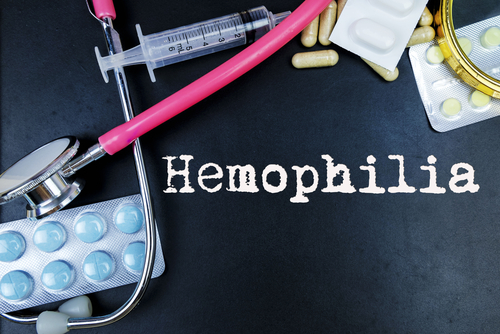Multiple Factors Contribute to Development of FVIII Inhibitors in Hemophilia, Review Finds

Several genetic and environmental factors can play a role in the development of inhibitors against treatment with factor VIII in hemophilia A patients, according to a review study.
The review, “Risk factors for inhibitor development in severe hemophilia A,” was published in the journal Thrombosis Research.
Severe hemophilia A is a genetic, life-threatening bleeding disorder characterized by a deficiency or dysfunction of clotting factor VIII (FVIII) — an essential component in the blood clotting process — due to mutations in the F8 gene.
Treatment with therapies that replace the missing FVIII are used either as a preventive measure or on demand to stop a bleed already in progress.
Despite the significant advances in treating hemophilia, one of the greatest complications remains the development of antibodies that prevent FVIII activity, called inhibitors. This occurs in almost 30% of previously untreated patients in the first 20-30 days after exposure to FVIII.
Development of FVIII inhibitors makes the disease significantly more difficult to manage, and is associated with an increase in complications and death of patients.
Several studies have investigated the mechanisms that lead to the development of FVIII inhibitors. However, the causes related to their development are complex and not yet fully understood.
In this review, researchers explored published data that investigates the multiple factors that possibly contribute to FVIII inhibitor development.
Studies have shown that genetics can often predict the development of FVIII inhibitors. Hemophilia patients can have a wide range of F8 mutations that lead to either a complete loss of the protein or loss of function.
Patients with F8 mutations that result in a complete loss of FVIII (null mutations) have been found to be associated with the highest risk of inhibitor development.
Additionally, researchers have speculated that mutations in other immune-related genes can lead to inhibitor development. These genes are being studied more closely now due to new and improved techniques. However, at this point, researchers cannot draw a conclusion due to a lack of large-scale, reproducible studies.
Researchers have also investigated the role of environmental factors in the development of FVIII inhibitors. These include type of FVIII product, age at first treatment, and intensity of treatment.
The most important modifiable environmental factor shown to contribute to inhibitor development is the source of FVIII — either plasma (blood)-derived or recombinant FVIII, made in the lab. Multiple clinical trials and studies have shown that the risk of inhibitor development is much more significant in patients treated with recombinant FVIII.
Researchers suggest that more robust studies are needed to investigate other environmental triggers such as infections, surgery, vaccinations, and type of bleeding on inhibitor development.
“… there is a fundamental need for well-designed studies to assess the interaction of environmental and genetic risk factors and how this interaction may aggravate the patient’s predisposition to inhibitor development,” the authors said.
They emphasize the need to develop predictive algorithms that can help determine which patients are at the highest risk for inhibitor development. Once high-risk patients are identified, physicians can help improve management of these patients.






